► Combining electricity and petrol
► The fastest hybrids you can drive
► Hybrid tech is also used in F1
Gone are the days when hybrid cars were synonymous with the Toyota Prius and others of its ilk. While the technology still serves to lower tailpipe emissions and improve efficiency by combining a battery and electric motor with a petrol engine, it’s also being exploited by supercar and hypercar makers to boost performance.
The ‘hypercar Holy Trinity’, comprising the McLaren P1, Porsche 918 Spyder and Ferrari LaFerrari, were among the first to show how a motor and battery can fill gaps in an engine’s torque curve with surges of electricity, improve handling with clever torque vectoring, and even let £1million+ hypercars drive silently in fully-electric mode for short distances.
Hybrid cars: further reading
As ever, motorsport is helping to drive this change in how road cars perform. First we saw hybrids take over the LMP classes at Le Mans, and since 2014 Formula One has used hybrid powertrains which manage to break circuit records while being more fuel efficient than ever.
The fastest hybrid cars
Often using technology borrowed from the race track, here are the quickest-accelerating hybrid sports and supercars on sale today, plus those coming in the next few months.
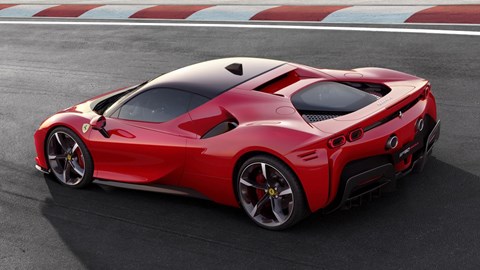
- 2.5 seconds
- £450,000
- top speed 211mph
Meet Ferrari's new halo model, the SF90 Stradale. Named after the Formula One car but with the 'Stradale' or street suffix, it's the fastest road car Maranello has ever made – and yes, it's a hybrid. The SF90 Stradale uses a 769bhp, 4.0-litre V8 and combines it with a 7.9kWh battery and three electric motors, worth 217bhp on its own. Put the two together and you get a topline figure 986bhp, a top speed of 211mph, and most importantly here, a 0-62mph sprint time of just 2.5 seconds. It's still practical though; the Stradale will do 16 miles of electric only, driving.
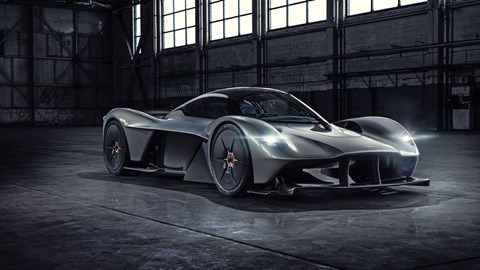
- 2.5 seconds (estimate)
- £2-3m
- top speed unknown
Likely to set a new yardstick in road car performance, the Aston Martin Valkyrie is the brainchild of Adrian Newey, chief technical officer of the Red Bull Formula One team. Built without the need to comply with F1 rules, the Valkyrie is powered by a naturally aspirated, 6.5-litre Cosworth V12 engine and battery hybrid system, which delivers a total power output of 1,130 horsepower.
The battery system, which works in a similar way to the KERS of a Formula One car, is built by Rimac, the Croatian automotive company which also produced its own limited-run electric hypercars.
Aston Martin is yet to announce the Valkyrie’s official 0-60mph time, but it will likely be around 2.5 seconds. The top speed of the Valkyries, of which just 150 will be built, also remains a secret for now, while a track-only version called the Valkyrie AMR is expected to reach 250mph.
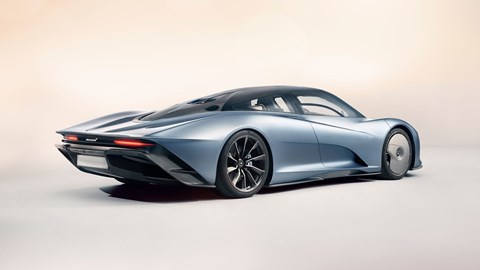
- Circa 2.5 seconds (estimate)
- £1.75m
- 250 mph
Intended to be a 21st century reimagining of the legendary McLaren F1 of the Nineties, the Speedtail is a three-seat hypercar with a goal of combining ultimate luxury and cross-continental comfort with a top speed of 250 mph.
McLaren has announced a 0-186mph (300km/h) time of 12.8 seconds, but is yet to reveal the car’s 0-60 mph time; we expect to see the 1,035-horsepower hybrid cover the sprint in around 2.5 seconds, a stat which is quickly becoming the new hypercar benchmark.
The Speedtail is powered by a 4.0-litre twin-turbo V8 with 746 horsepower, plus an electric motor which generates up to an additional 308 horsepower. However, because the engine and motor reach peak power at different times, the total output isn’t the sum of those two figures added together - a common trait among hybrids.
Inside, the Speedtail has a three-seat layout with the driver sitting in the middle, flanked by two lucky passengers. McLaren is pitching the Speedtail as a ‘hyper GT’ car, capable of high speed, but delivering it in a more refined, comfortable and luxurious way than the brutalist McLaren Senna.
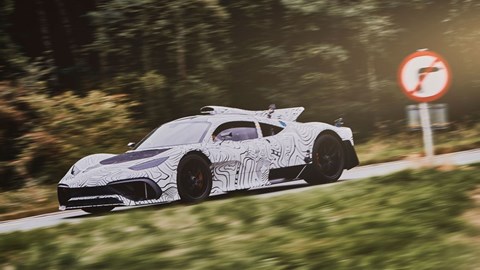
- Circa 2.5 seconds (estimate)
- 217+ mph
- £2m
Another next-generation hybrid hypercar whose acceleration stats are estimates for now, the Mercedes-AMG One is expected to reach 60 mph in under three seconds and have a top speed of over 217 mph.
Such figures shouldn't come as a big surprise, guven Mercedes is fitting the Project One with a 1,000+ horsepower 1.6-litre hybrid V6 power unit which is closely related to that used by Mercedes’ F1 cars. This petrol engine will be joined by four electric motors, all of which send their power to the four wheels through an eight-speed automated manual transmission.
Adapting an F1-spec engine for road use is no mean feat, and so despite revealing the car back in 2017 the first of the 275 examples to be built isn’t expected to arrive on buyer’s driveways until 2020 - giving them plenty of time to save up for the approximate £2.4 million list price.

- 0-62mph in 2.6 seconds
- 211 mph
- 875 bhp
The final member of the Holy Trinity is the only to have a removable roof and all-wheel-drive. The Porsche is powered by a 4.6-litre V8 plus a 277 bhp electric motor - a far larger amount of electrical assistance than offered by the McLaren and Ferrari.
An electric-only mode delivers up to 18 miles of zero-emission driving at up to 93mph. The complex electrical system delivers power to both the front and rear axles, aiding traction of the line and grip through corners.
Limited to 918 examples, the 918 Spyder was offered with the optional £58,000 Weissach package, which added lightweight wheels, an Alcantara-trimmed interior, and a 40kg reduction in overall weight. Porsche claims this takes the car’s 0-186 mph time down from 22 to 19.1 seconds.
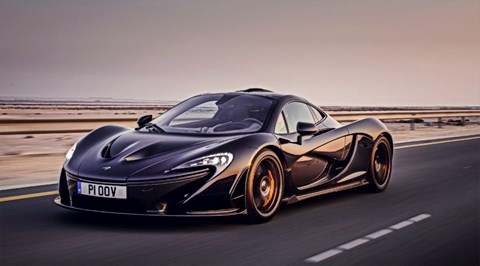
- 0-62mph in 2.8 seconds
- 217 mph
- 903bhp
The year 2013 was an important moment in the history of the supercar, as it saw the launch of the McLaren P1, Ferrari LaFerrari, and Porsche 918 Hybrid - the first supercars to come with hybrid drivetrains.
The McLaren P1 combined the power of 3.8-litre twin-turbocharged V8 with a 4.7 kWh battery pack and a 176bhp electric motor.
Limited to 375 units built, the P1 can operate in electric-only mode for a handful of miles, but the primary purpose of the electric motor is to offer what McLaren calls ‘torque fill’. This is where the motor assists the engine through any flat points in its torque curve, helping to produce a seamless surge of acceleration.
As well as its hybrid drivetrain, the P1 also caused a stir with its dramatic Race Mode, which drops the ride height and raises the huge rear wing to a 29-degree angle of attack, which helps produce 600 kg of downforce. The P1 is a member of the so-called Holy Trinity of hybrid supercars, along with the Porsche 918 Spyder and Ferrari LaFerrari.
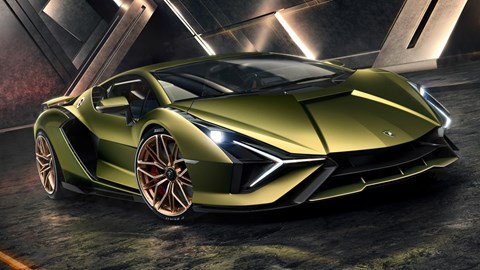
- 0-62mph in 2.8 seconds
- V12 + supercapacitors
- 808 bhp
Get past the terrible name and look at the stats: this is the most powerful Lamborghini ever made, and the first to use hybrid power. Sant'Agata is making just 63 of the new Sian, and sources suggests this limited-run monster is a preview for the all-new Aventador coming next year.
The VW Group marches on toward electrification, but Lamborghini hasn't resisted – merely gone on a high-performance tangent. Instead of the usual lithium-ion batteries used in hybrid cars, this Aventador prologue uses supercacitors. Although they lack the storage and overall ability to hold charge, they're better at rapidly discharging and recharging – perfect for a hypercar.
Combine that with a V12 and you've got 808bhp, 0-62mph in 2.8 seconds and an as yet undisclosed top speed.
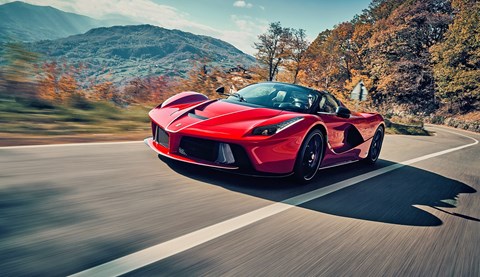
- 0-62mph in sub-3.0 seconds
- 217+ mph
- 950 bhp
Ferrari’s egotistically-named answer to the P1 is the LaFerrari. This also uses a petrol and hybrid power system to push out over 900bhp, achieve a sub-three-second 0-62mph, and exploit electric propulsion for increased performance.
In this case, we have a 6.2-litre naturally-aspirated V12 with a 160bhp electric motor and battery pack. Unlike the relative newcomer of McLaren, the LaFerrari can trace its bloodline back to the 288 GTO of the mid-Eighties, via the F40, F50 and Enzo. Ferrari built 499 examples of the LaFerrari, plus 210 of the Aperta version, which has a removable roof.
Using KERS technology borrowed from the F1 team, the LaFerrari’s engine, motor and battery work as one, with energy constantly being harvested back into the battery when braking, but also via use of the traction control system and E-Diff.
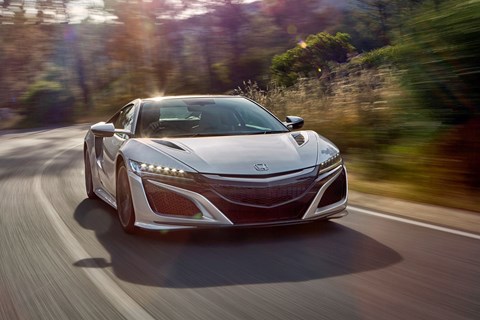
- 3.0 seconds
- 191 mph
- £145,000
A 2016 revival of the Nineties’ original made famous by Ayrton Senna playing a part in its development, the second-generation Honda NSX has stolen a march on many of its rivals in the circa £150,000 supercar category. See our Honda NSX video review here.
While we wait for hybrid supercars from the likes of Ferrari, Lamborghini and Aston Martin, Honda has given the NSX a 3.5-litre twin-turbo V6 engine with three electric motors.
Two of these motors independently drive the front wheels, giving the car all-wheel-drive, but also allowing for trick yaw control, as the car’s computer shuffles torque between the front wheels during cornering. Under acceleration the system works like a McLaren P1, helping the engine and filling gaps in the torque curve.
Combined power output from the engine and three motors is 572bhp, which is enough to launch the car to 60mph in three seconds, before reaching a top speed of 191mph.
Once the battery is sufficiently charged (by harvesting energy through regenerative braking) the £145,000 NSX can be driven emission-free in its all-electric mode, but only for a handful of miles.
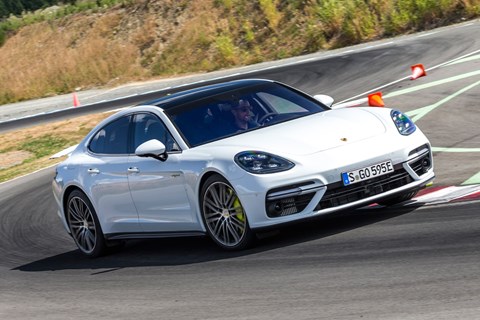
- 3.4 seconds
- 192 mph
- £140,132
Porsche is due to put its first all electric car, the Taycan, into production in 2020. But before that, the company is already selling hybrid versions of its four-seat Panamera. The flagship Turbo S E-Hybrid combines a 4.0-litre turbocharged V8 petrol engine with a 136 horsepower electric motor to produce a combined 680 hp.
This means a 0-62mph time of 3.4 seconds, a top speed of 192 mph, and the ability to drive in fully-electric mode for up to 30 miles. Alternatively, the battery and motor can be used to assist the V8 when accelerating - a system Porsche says is similar to that used by its 918 Spyder hybrid hypercar.
The car can top up its 14.1 kWh battery via regenerative braking, or it can be plugged in and filled in as little as 2.5 hours at a high-speed public charger.
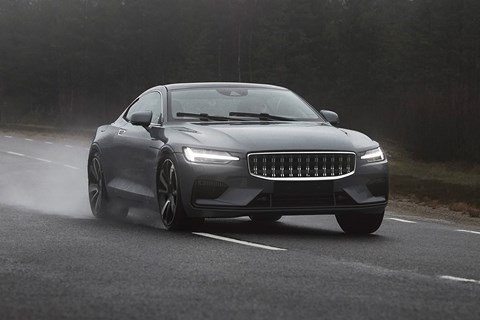
- 3.5 seconds (est)
- circa £130,000 (subscription)
- top speed unknown
A relative newcomer to the automotive world, Polestar is a division of Volvo and its first car, unimaginatively called the 1, is a hybrid coupe pairing a battery and motor with a 2.0-litre, in-line four petrol engine which is both turbocharged and supercharged. We'
Total power output is 592bhp, with a little over half coming from the engine and the rest supplied by the 34 kWh battery pack. The front-mounted engine is used to drive the Polestar 1’s front wheels, while the electric motors send their power to the front wheels, thus enabling all-wheel-drive and intelligent torque vectoring to improve handling. The car’s pure electric range is a claimed 100 miles, which is far beyond that of its rivals. We've now driven it too, and you can read our review of a Polestar 1 prototype here.
Polestar says the 1, which is due to go into production later in 2019, will have a 0-60mph time of under four seconds, but is yet to reveal the car’s top speed. The price will be in the region of £130,000, but Polestar plans to sell the car on a subscription model instead of expecting drivers to buy it outright; the subscription cost hasn’t yet been announced.
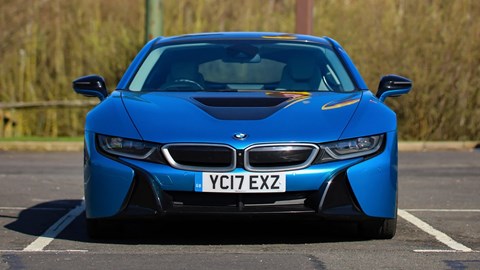
- 4.4 seconds
- 155 mph
- £114,935
Taking a similar approach to hybridisation as the Honda, the BMW i8 does so with a far more reserved 1.5-litre, three cylinder turbocharged engine, plus a pair of electric motors powering the front wheels.
Despite the comparatively tiny engine, the i8 has a combined power output of 356bhp and a 0-60 mph time of 4.4 seconds; the top speed is 155mph, and an all-electric mode offers up to around 20 miles of zero-emissions driving. The battery is topped up through regenerative braking, but can also be plugged in like a regular hybrid or electric car.
Like the NSX, the BMW i8 uses its electric motors to offer silent driving for several miles at lower speeds, and to assist the petrol engine when accelerating. Added convenience comes in the form of two small rear seats, but these are only really intended for children, or for use on very short journeys.
As well as a high-tech hybrid system, the i8 features an advanced carbon fibre reinforced plastic construction, look-at-me vertically-hinged doors - and there’s a Roadster version with removable roof, too.

- 4.7 seconds
- 155mph
- £76,600
The hybrid version of the Lexus LC 500 pairs a 3.5-litre V6 petrol engine with a battery and electric motor for a combined power output of 359 horsepower, a zero to 60mph time of 4.7 seconds, and a top speed of 155mph.
Described by Lexus as a luxury grand tourer instead of a sports coupe, the LC 500h uses a trick 10-speed continuously-variable transmission (CVT) instead of a conventional automatic gearbox. This means improved economy at cruising speeds, on top of what the hybrid drivetrain can already bring to that particularly frugal party.
The Lexus can drive on electric power alone, and will generally do so every time the driver sets off at sensible speeds; a larger press of the accelerator will summon the V6 into life, and it will shut down again when the computer feels it can switch back to battery-only and save fuel.
The cheapest hybrid cars you can buy today